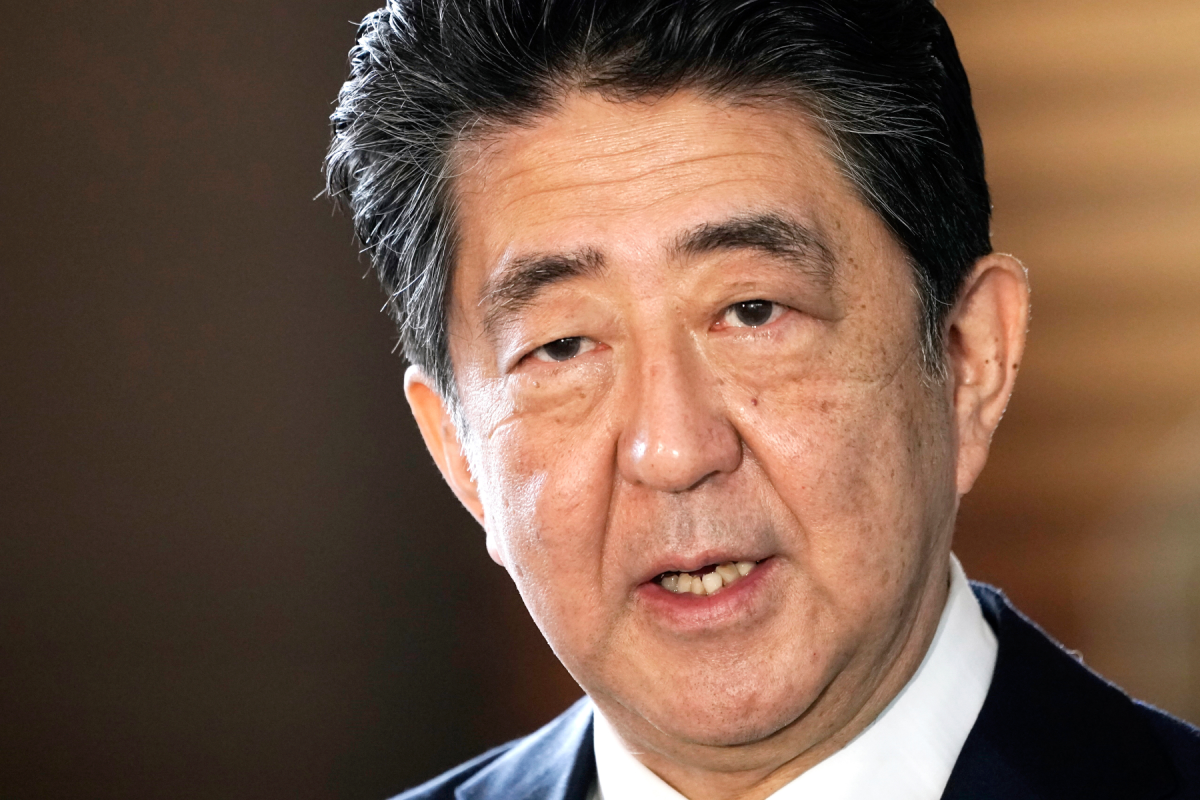Former Japanese PM Shinzo Abe dead at 67 after being shot on campaign trail
Police arrested the suspected shooter, who reportedly used a homemade firearm, shortly after the incident in the Western Japan city of Nara
By Kat Bouza

Former Japanese Prime Minister Shinzo Abe has died after being shot dead on the campaign trail.
Abe was shot by a lone gunman while on the campaign trail in the Japanese city of Nara Friday morning. The unprecedented shooting comes as Japan gears up for its House of Councillors election, which takes place this Sunday.
According to Japanese national broadcaster NHK, Abe, 67, was in the ancient capital, located roughly 30 miles outside of Kyoto, giving a stump speech near the city’s Yamato-Saidaiji Station in support of his Liberal Democratic Party (LDP) when he collapsed at around 11:30 a.m. local time. Journalists and bystanders assembled to see the former prime minister reported hearing two gunshots. Police stated Abe was conscious after the shooting and was transported to Nara Medical University Hospital by helicopter. In a statement, Japan’s Fire and Disaster Management Agency later confirmed Abe was shot in the neck and entered cardiopulmonary arrest.
Local police confirmed that a man in possession of a homemade firearm — later identified as 41-year-old Nara City resident Testuya Yamagami — was taken into custody shortly after the incident on suspicion of attempted murder, Mainichi Shinbun reported. Images of Yamagami, who was wearing a gray shirt and could be easily seen in the crowd standing behind Abe, quickly spread on Japanese social media. Yamagami, according to the Ministry of Defense, is a former member of Maritime Self-Defense Force and left military service in 2005. Law enforcement told NHK that, during police interviews, Yamagami stated that he was dissatisfied with Abe and “aimed to kill him.”
During a press briefing Friday afternoon local time, Prime Minister Fumio Kishida — himself a member of the LDP — said Abe remained in “grave” condition and that medical personnel were working diligently to treat the former prime minister. “Although the circumstances of this crime are not yet known, this is a despicable and brutal act that occurred during an election, which is the foundation of democracy,” Kishida told reporters during the presser, which was viewed and translated by Rolling Stone. When asked about possible political motivations behind the shooting, Kishida asked the media to refrain from speculation, stating the government was focused solely on monitoring Abe’s condition. In a later press conference, Minister of Defense Nobuo Kishi — who is also Abe’s younger brother — stated the former prime minister was currently receiving blood transfusions.
Shortly before 1:00 p.m., Chief Cabinet Secretary Hirokazu Matsuno gave a press briefing stating officials were “continually monitoring” the situation. “Such acts of brutality cannot be tolerated,” Matsuno said. “We absolutely condemn this act.” Speaking to Mainichi, an unidentified LPD official called the shooting an act of “terrorism.” (Japanese government officials typically speak to the press on condition of anonymity.)
Friday’s shooting sent shockwaves across the country, with a hashtag translating to “we want democracy, not violence” trending on Japanese Twitter by the early afternoon. Japan’s gun laws are among the strictest in the world, with civilian ownership of firearms numbering around 400,000 — or just 0.5% of the population — according to the country’s Ministry of Foreign Affairs. In 2021, Japan recorded a single gun-related fatality, down from four in 2020, a report by the National Police Agency states.
Civilians are restricted to owning air files or shotguns and must undergo a rigid application process — which includes stringent background checks, mental health evaluations, interviews with family members and mandatory training classes — before receiving permission to purchase a firearm. Gun owners must repeat portions of the application process every three years and guns must be surrendered to authorities upon the gun owner’s death.
Video of the shooting began circulating on Japanese media, showing the moment directly before and after the shooting. In the clips, newscasters direct viewers to the left of the screen, where a cloud of gunpowder could be seen.
Numerous images and videos posted on Twitter show a team of handlers surrounding the former prime minister as he lies motionless on the pavement. In one video, a man can be heard over a loudspeaker asking any medical professionals in the crowd to provide assistance.
Abe, who comes from a prominent political family, first entered politics in 1993 when he was elected to Japan’s House of Representatives, representing the southern prefecture of Yamaguchi. (His maternal grandfather, former Prime Minister Nobusuke Kishi, was also the target of an assassination attempt in 1960.) After a brief stint as Chief Cabinet Secretary, Abe was elected to lead the ruling LDP and he began his first term as prime minister in 2006, which lasted a year and was marred by controversy. He remained a member of the House of Representatives and was re-elected as LDP leader in 2012, becoming prime minister for a second term — a position he held until stepping down due to health concerns in 2020, making him the longest-serving prime minister in Japan’s history.
Long considered a right-wing member of the conservative LDP, Abe is known for his strong ties to Nippon Kaigi — a controversial far-right, ultranationalist lobbying group that holds strong influence over Japanese politics — and controversial views on Japanese war crimes, including the forced sexual slavery of so-called “comfort women during World War II.
